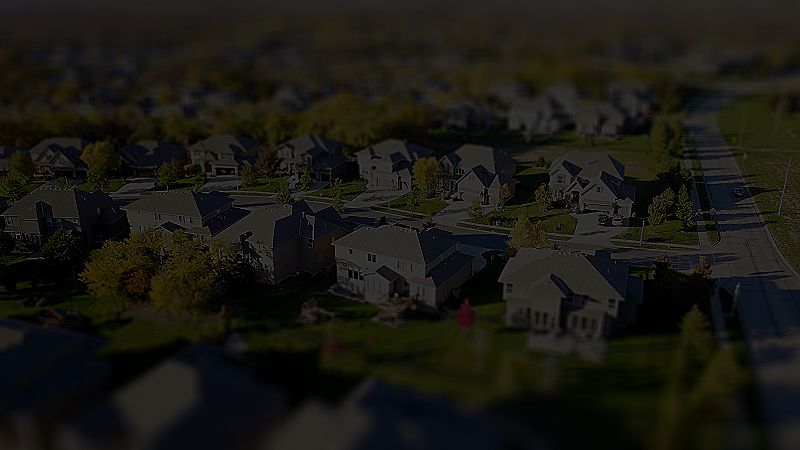Homeowners insurance is an essential financial protection for one of your most significant investments—your home. However, with premiums rising consistently over the years, many homeowners are looking for ways to reduce their insurance costs without compromising on the coverage they need.
The good news is that there are numerous strategies to lower your home insurance premiums while maintaining adequate protection. This comprehensive guide walks you through actionable steps to save money on your homeowners insurance policy while ensuring your home and possessions remain properly covered.
Understanding Home Insurance Pricing Factors
Before exploring ways to reduce costs, it's helpful to understand what influences your premium:
Home-Specific Factors
- Location: Your home's proximity to fire stations, crime rates in your area, and susceptibility to natural disasters
- Construction: Building materials, age of the home, and structural features
- Replacement cost: The estimated cost to rebuild your home completely
- Protective features: Presence of security systems, smoke detectors, sprinklers, etc.
- Attractive nuisances: Features like swimming pools or trampolines that increase liability risk
Policy-Related Factors
- Coverage limits: The maximum amount your policy will pay for different types of losses
- Deductible amounts: How much you'll pay out-of-pocket before insurance kicks in
- Optional coverages: Additional protections beyond standard coverage
- Discounts: Special rate reductions you may qualify for
Homeowner-Specific Factors
- Claims history: Previous claims filed on your property or by you at other properties
- Credit history: In most states, credit-based insurance scores influence premiums
- Length of coverage: Loyalty or longevity with the same insurer
Immediate Steps to Lower Your Premium
These strategies can help you reduce costs relatively quickly:
1. Shop Around and Compare Quotes
Perhaps the most effective way to ensure you're getting a good rate:
- Get quotes from at least 3-5 companies: Insurance pricing varies significantly between providers
- Use comparison tools: Online platforms make it easier to compare multiple quotes
- Consider independent agents: They can shop multiple companies for you
- Re-shop every 1-2 years: Market conditions and company pricing strategies change regularly
2. Increase Your Deductible
A simple adjustment that can significantly reduce premiums:
- Consider moving from $500 to $1,000: This change alone typically saves 10-15% on premiums
- Higher options like $2,500 or $5,000: Can save even more but increase your out-of-pocket costs in a claim
- Create a dedicated emergency fund: Set aside the deductible amount so you're prepared if you need to file a claim
- Evaluate risk tolerance: Balance potential savings against your ability to cover higher out-of-pocket costs
3. Bundle Your Policies
Combining multiple policies with one insurer usually results in discounts:
- Home and auto bundle: The most common combination, typically saving 10-15% on both policies
- Additional policies: Life, umbrella, motorcycle, boat, or RV insurance can often be bundled too
- Compare bundle vs. separate: Sometimes separate policies from different companies may still be cheaper
4. Ask About All Available Discounts
Many homeowners miss out on discounts simply because they don't ask:
- Loyalty discounts: For staying with the same company for several years
- Claims-free discounts: For not filing claims over a certain period
- Automatic payment discounts: For setting up automatic premium payments
- Paperless discounts: For receiving policy documents electronically
- Professional association discounts: For members of certain groups or alumni associations
- Retiree discounts: Many companies offer lower rates to retirees
- New home discount: For recently built homes
- New customer discounts: Special rates for first-time customers
5. Improve Your Credit Score
In most states, your credit impacts your insurance premium:
- Pay bills on time: Payment history is the most influential factor in your score
- Reduce debt: Work on lowering credit card balances
- Check your credit report: Dispute any errors that could be negatively affecting your score
- Maintain established accounts: Longevity of credit history affects your score positively
Home Improvements That Can Lower Premiums
Strategic upgrades can reduce risk and consequently lower insurance costs:
Security Enhancements
- Monitored alarm systems: Can provide discounts of 5-20% depending on features
- Smart home security: Connected devices that detect intrusion or allow remote monitoring
- Deadbolt locks and security bars: Basic security improvements that may qualify for discounts
- Security cameras: Visible surveillance systems that deter theft and document incidents
Disaster Mitigation Improvements
- Storm shutters: Protect windows during high winds
- Impact-resistant roofing: Better withstands hail and flying debris
- Hurricane straps: Reinforce roof-to-wall connections in high-wind areas
- Foundation retrofitting: Strengthens homes against earthquake damage
- Elevation projects: Raise structures in flood-prone areas
Fire Prevention and Suppression
- Smoke detectors and carbon monoxide alarms: Basic protection every home should have
- Fire extinguishers: Strategically placed throughout the home
- Sprinkler systems: Particularly valuable for larger homes
- Electrical system upgrades: Replacing outdated wiring reduces fire risk
Water Damage Prevention
- Automatic water shut-off devices: Can detect leaks and prevent major water damage
- Sump pumps with battery backup: Protect against basement flooding
- Updated plumbing: Replacing older pipes, especially galvanized or polybutylene
- Water leak detection systems: Smart home devices that alert you to potential leaks
Policy Adjustments to Consider
Reviewing and adjusting your coverage can identify savings opportunities:
Review Your Coverage Limits
- Dwelling coverage: Ensure it reflects current rebuilding costs—not too high or too low
- Personal property coverage: Typically set at 50-70% of dwelling coverage; adjust if needed
- Liability coverage: Consider your assets and risk exposure before reducing
- Special limits: Review coverage for high-value items like jewelry or art
Eliminate Unnecessary Coverage
- Review endorsements: Remove any that no longer apply to your situation
- Consider actual cash value for contents: Instead of replacement cost (though this means depreciation will be applied)
- Evaluate covered perils: Some policies offer savings if you exclude certain types of coverage you're unlikely to need
Adjust Coverage Types
- HO-3 vs. HO-5 policies: Understanding the difference between "named perils" and "open perils" coverage
- Scheduled personal property: For high-value items, sometimes scheduling them separately is more cost-effective
- Flood insurance considerations: If not in a high-risk zone, evaluate whether you need this coverage
Long-Term Strategies for Lower Premiums
These approaches may take time but can lead to substantial savings:
Strategic Home Location and Features
- Proximity to fire hydrants and stations: Homes closer to these resources often have lower premiums
- Neighborhood selection: Areas with lower crime rates typically have lower insurance costs
- Construction materials: Brick, stone, and concrete structures usually cost less to insure than wood-frame homes
- Avoid high-risk areas: If possible, avoid locations prone to flooding, wildfires, or other natural disasters
Maintain a Claims-Free History
- Reserve claims for significant losses: Consider paying smaller damages out-of-pocket
- Understand the impact of claims: Even weather-related claims can affect your rates
- Claim-free discounts: Many insurers reward customers who go years without filing claims
Regularly Review and Update Your Inventory
- Document belongings: Keep an updated inventory with photos and receipts
- Remove outdated items: Don't pay to insure possessions you no longer own
- Reassess values: Ensure your coverage reflects current replacement costs
Special Considerations for Different Homes
Different types of homes have unique insurance considerations:
Older Homes
- Historic home policies: Specialized coverage for historically significant properties
- Updated systems discounts: Substantial savings for modernizing electrical, plumbing, and HVAC
- Replacement cost challenges: Consider guaranteed replacement cost for unique architectural features
New Construction
- New home discounts: Most insurers offer lower rates for recently built homes
- Building code advantages: Modern homes built to current codes typically have lower premiums
- Smart home integration: New construction with built-in smart technology may qualify for additional discounts
Condos and Townhomes
- HOA master policy coordination: Ensure your individual policy complements association coverage
- Walls-in coverage: Focus on insuring what you actually own, not common areas
- Loss assessment coverage: Protection against special assessments for damage to common areas
Vacation or Second Homes
- Occupancy considerations: Vacant or occasionally occupied homes face different risks
- Remote monitoring systems: Can provide substantial discounts for homes that are frequently unoccupied
- Bundling with primary residence: Often provides additional discount opportunities
Working with Your Insurance Provider
Effective communication with your insurer can lead to additional savings:
Regular Policy Reviews
- Annual check-ins: Schedule regular reviews with your agent or insurance company
- Life event updates: Notify your insurer about renovations, security upgrades, or other changes
- Coverage reassessment: Periodically evaluate whether your coverage still matches your needs
Questions to Ask Your Insurance Provider
- "What specific discounts am I currently receiving?"
- "Are there any additional discounts I might qualify for?"
- "How would changing my deductible affect my premium?"
- "What home improvements would help lower my insurance costs?"
- "How does my claims history affect my premium?"
- "Is my current coverage appropriate for my home's value?"
Understanding Premium Increases
- Regional factors: Sometimes rates increase due to area-wide claims or reassessed risk
- Market conditions: Reinsurance costs and inflation affect all insurers
- Personal factors: Claims, credit changes, or property modifications can trigger increases
- Shopping alternatives: If facing a significant increase, that's the perfect time to compare quotes
Common Mistakes to Avoid
Watch out for these pitfalls when trying to reduce home insurance costs:
- Being underinsured: Skimping on coverage can lead to devastating financial losses
- Focusing solely on price: The cheapest policy isn't always the best value
- Ignoring liability coverage: This protects your assets beyond just your home
- Failing to report improvements: Not telling your insurer about security or safety upgrades
- Setting deductibles too high: Choose a deductible you can actually afford to pay
- Not understanding policy exclusions: Being surprised by what isn't covered when you file a claim
When to Consider Changing Insurance Companies
Sometimes switching providers is the best strategy:
- Significant premium increases: If your rate jumps more than 10-15% without explanation
- Poor claims service: Difficult experiences with previous claims
- Better bundle opportunities: More favorable multi-policy discounts elsewhere
- Life changes: Major life events might make other insurers more competitive
- Company stability concerns: Financial rating downgrades or negative coverage in the news
Conclusion
Reducing your home insurance costs doesn't have to mean sacrificing the protection your home deserves. By understanding what influences your premium, making strategic home improvements, adjusting your policy appropriately, and taking advantage of all available discounts, you can achieve significant savings while maintaining comprehensive coverage.
Remember that home insurance is ultimately about financial protection—balancing affordable premiums with adequate coverage is the key to true value. Taking the time to review your policy regularly, communicate with your insurance provider, and implement the strategies outlined in this guide can lead to both immediate and long-term savings on your homeowners insurance.






